East West Lifestyle
Celebrity Chefs and Mainstream Multiculturalism
By
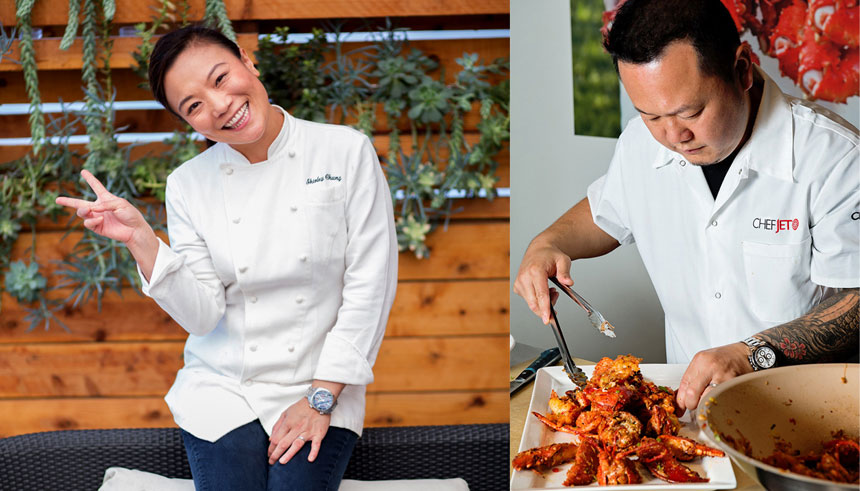
Jet Tila and Shirley Chung turn their multicultural heritage into delicious cuisine.
The United States is known as a “melting pot,” and, when it comes to cuisine, that phrase is especially appropriate. As the population of the U.S. becomes increasingly multicultural, so does the typical American culinary experience. The growth of food chains such Panda Express and Pei Wei Asian Diner shows that palates are expanding beyond the typical fast food burger joint. However, multicultural food isn’t limited to just fast food and fast casual restaurants—it’s breached even the upper echelons of fine dining and brought a whole new meaning to the term “world-class cuisine.”
Deep in the midst of this multicultural foodie movement are celebrity chefs like Jet Tila and Shirley Chung. Both Tila and Chung grew up multicultural: Tila, who is a regular judge on the Food Network’s “Cutthroat Kitchen,” was raised in the ethnic mishmash that is Los Angeles, Calif., and Chung, proprietor of Twenty Eight in Orange County and upcoming seafood concept Steamers Co., came from a family of globe-trotting foodies. As a result, they flit between several different cultures and seamlessly incorporate their diverse experiences into their own cuisine. Both Tila and Chung are participating in this year’s East West Masters Dinner, an annual food extravaganza where five of today’s most exciting culinary tastemakers prepare a multi-course dinner live in front of diners. The East West Masters Dinner is part of the All-Star Chef Classic, a premier culinary event sponsored by East West Bank at L.A. Live that celebrates the latest innovations in global cuisine.
Embracing different cultures
From the start, Tila was exposed to a multitude of different cuisines. He grew up in Los Angeles, where his parents opened the country’s first Thai grocery store, Bangkok Market, in East Hollywood in 1972, right “in the hub of Central American food and Filipino food, and close to Chinatown and Little Tokyo.” Although Tila grew up in an extremely diverse neighborhood, has dabbled in various cuisines, and attended both French and Japanese culinary schools, he considers Thai and Chinese food his “core cuisines,” as he puts it. “My grandparents are Chinese,” explains Tila. “Then they moved to Thailand. When they moved to Bangkok, they had a little Hainanese café. My mom and dad were the first of the large group of Thais to settle in the United States; they opened up [Bangkok Market] and, after that, in about ’78, they opened a Thai restaurant.”
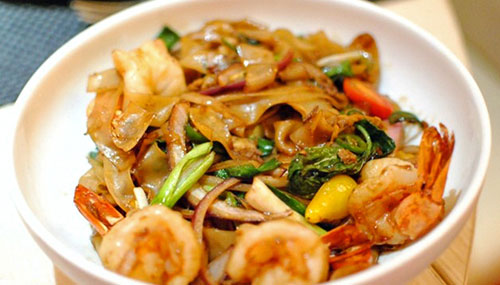
"My cooking—no matter what it is—always comes back to chasing very authentic, delicious flavors."
For Chung, it was her grandmother who whetted her appetite for global cuisine. Chung was born and raised in Beijing, China, but her grandmother, who traveled often as the former director of the Red Cross in China, always made sure to bring back foreign treats for her granddaughter. “My grandmother believed in teaching foreign culture through food,” reminisces Chung. “She always brought back local snacks, told me about stories and what she experienced, the etiquettes. I learned how to say ‘cheese,’ ‘spaghetti,’ and ‘ice cream’ in English probably before I learned how to say them in Chinese.”
Infusing multiculturalism into food
Food is the most authentic representation of culture—but what happens when there are multiple cultures in the mix?
Tila believes there are two types of chefs: artists and artisans. He clarifies that “artists try to make new things”—such as fusing different cultural cuisines to create brand-new culinary experiences—whereas “artisans try to preserve the old things the right way.” Tila places himself in the latter category.
“I’ve always tried to travel and study dishes and the history,” Tila says about his preferred cooking style. “I always speak to the moms and the grandmas who have been making a dish a certain way for a long time. I take a lot of my formal training in the industry and try to apply it to preserving traditional or lost dishes and techniques. My cooking—no matter what it is—always comes back to chasing very authentic, delicious flavors.”
That desire to uphold authenticity doesn’t mean Tila rejects multiculturalism. At his quick-serve restaurant concept Modern Asian Kitchen, Tila serves dishes from all across the continent. “If we do bibimbap [a Korean dish of mixed rice, meat and vegetables], it’s going to be very authentic-tasting bibimbap,” he says. “But you can also have ho fun [Chinese stir-fried rice noodles], or a dou miao [snow pea shoots], and each dish will be reflective of what it’s supposed to taste like and where it comes from.”
"This is what I really want to push—not just Chinese cuisine, but Chinese-American cuisine."
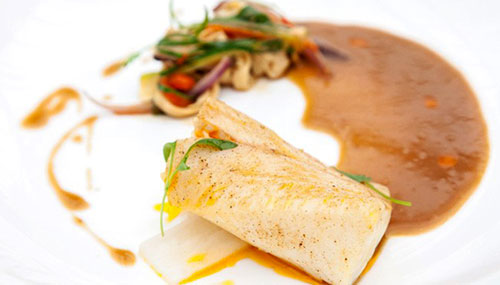
But if Tila thinks of himself as an artisan, Chung falls under the “artist” category. When she first moved to America in the mid-’90s, she found it difficult to find the exact ingredients to make traditional Chinese food. To work around that, Chung began using similar ingredients from other cultures to make up the flavors. “I thought, maybe I can buy fermented soy paste or miso from a Japanese market or a Korean market to make zhajiangmian [Chinese noodles made with soybean paste],” says Chung. “I got used to using those substitutions, and I just played around with the ingredients.”
However, at the start of her culinary career, Chung focused mainly on formal French and Italian cuisine. Her resume is quite impressive: when living in Las Vegas, she opened restaurants for world-renowned chefs Thomas Keller, Guy Savoy and Mario Batali. But it wasn’t until her stint at José Andrés’ China Poblano, a James Beard Award-nominated Chinese-Mexican restaurant concept in Las Vegas, that Chung first cooked Chinese food in a professional, fine-dining setting.
“That sort of stirred something that was ticking in me,” she says. “It made me realize, ‘Wow, this is actually what I really love.’” Working at China Poblano opened Chung’s eyes to the possibilities of multiculturalism—in both cooking and herself.
“From there, I slowly and more willingly incorporated my Chinese soul and my Chinese flavor into my regular day-to-day cooking,” she says. “It’s a process for me—from cooking, I learned about who I am, and I learned about my heritage, my Chinese-American heritage, and to be really proud of it. This is what I really want to push—not just Chinese cuisine, but Chinese-American cuisine.”
Food TV as a cultural portal
It’s no secret that television—and media, in general—wields immense cultural influence. Media can expose people to things they otherwise would have never heard of, change perceptions, and create shared interests amongst disparate factions. Food television is no less powerful.
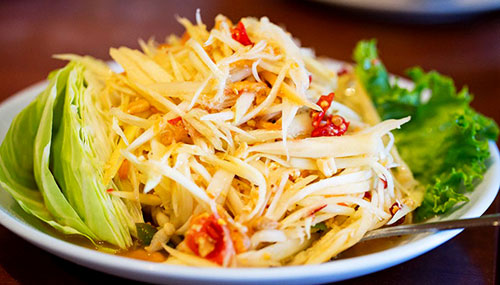
"People realize, he’s not ‘different’ than I am—there are parts of him that are different, but this guy is no different than I am."
The Food Network alone reaches more than 100 million households in the United States, and the website has 35 million unique users each month—that’s excluding the numbers for popular shows like “Hell’s Kitchen” and “Top Chef,” which air on Fox and Bravo TV, respectively. Shows like these help disseminate foreign cultures via food into the mainstream, in easily digestible and inoffensive ways.
“[Food TV] is a phenomenal stepping stone into discovering cultures,” Tila observes. Eating has a communal aspect in most cultures, so food serves as safe space to build relationships and bridge the gaps between different communities. “I’m on TV every day on Food Network, and I help to erase stereotypes,” says Tila. “It helps make you less foreign, less scary. People realize, he’s not ‘different’ than I am—there are parts of him that are different, but this guy is no different than I am, so maybe now I won’t be scared to try Vietnamese food.”
The future of food
As with most industries, the food and restaurant business is subject to shifting trends. Chung believes that more chefs are embracing and returning to their heritage, like she herself has done. “Because of diversity in the U.S., and especially in LA, our food culture is also so diverse,” she says. “Because of this, you see more and more classically trained chefs go back to their roots, opening up restaurants that not only represent a certain concept but actually represent who we truly are—mixed in with our classical training and our experience from all other cuisines. Food is not just food—food is emotion. There are so many more feelings and stories behind everything, and it’s the best way for people to connect.”
"Food is not just food—food is emotion."
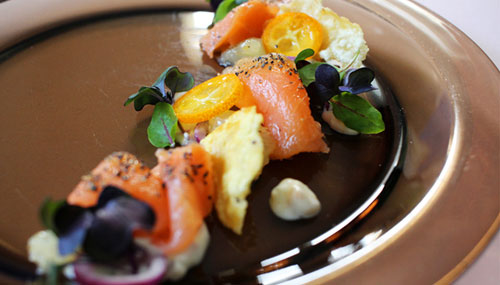
Chung’s belief that cuisine is becoming a literal melting pot is certainly in line with the increasing diversity and multiculturalism of younger generations. In a 2015 report on multicultural consumers, Nielsen states that this increasingly powerful generation sees “ambiculturalism” as the new mainstream, yet still value exploring their individuality and unique cultural heritages. “Nationally, the taste for ethnic foods will be continually increasing,” says Tila. “These kids are eating sushi every week, they’re eating Thai food every week—these categories will blur, and it’s all becoming American food.”
Tila also adds that, thanks to the digitization of the world, the diffusion of trends and cultures across regions is also quickening. “The adaptation cycle from coasts to middle America is going to shrink because of the proliferation of food television and tech, and the way younger people consume information,” says Tila. “So, you see pho restaurants popping up in middle America, and what we thought would be more esoteric Asian food will soon not be. “
Subscribe to the Reach Further Newsletter
Get inspiring stories in your inbox every month.

